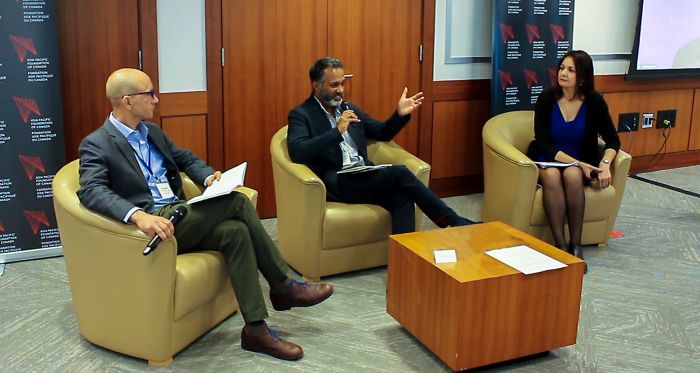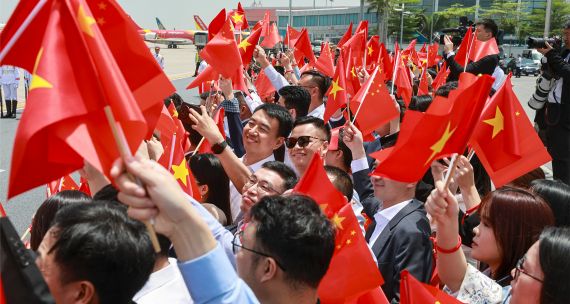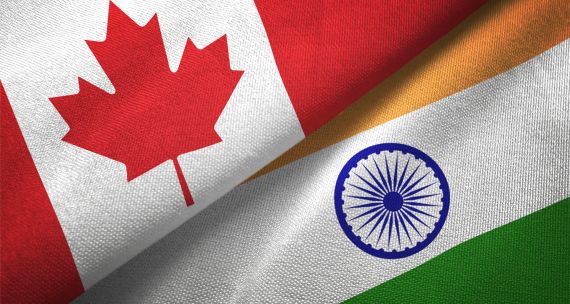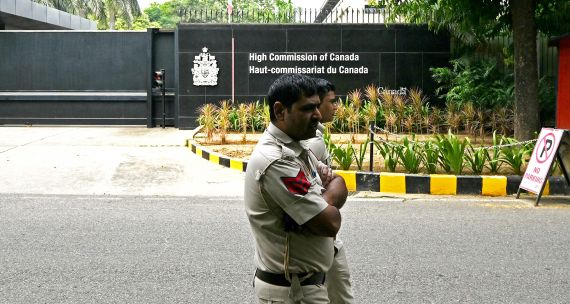On May 22, 2024, the Asia Pacific Foundation of Canada and Simon Fraser University’s David Lam Centre, with support from the Department of Political Science and Faculty of Arts and Social Sciences at Simon Fraser University, convened a panel of experts to discuss the evolving relations between India and countries in Southeast Asia amid escalating great power competition, and lessons and possible opportunities for Canada.
Highlights from their discussion follow, and a video recording of the conversation is available on APF Canada’s website.
India’s strategic outlook toward Southeast Asia has shifted perceptibly over the past decade, from its traditional ‘non-aligned’ approach to being a more engaged stakeholder. Since the start of Prime Minister Narendra Modi’s tenure in 2014, New Delhi has embraced the ‘Indo’ part of the ‘Indo-Pacific’ construct increasingly used by other regional powers, by, for example, deepening defence ties with countries like Indonesia, the Philippines, and Vietnam; bolstering maritime security efforts in the Indian Ocean Region; and conducting joint naval exercises in the South China Sea.
While India had already begun to transform its ‘Look East Policy’ initiated in 1991 to the ‘Act East’ policy in 2014, its concerns about China’s increasing assertiveness in the region buttressed this shift. India and its partners in Southeast Asia have recently embarked on a flurry of high-level diplomatic exchanges, proposed bilateral preferential trade agreements, and deepened defence ties. As one example, India began delivering its Brahmos supersonic missiles to the Philippines in April 2024 after inking a deal with Manila in 2022. Reports suggest that similar deals with Vietnam and Indonesia might also be in the works. Remarkably, in a novel move for India, in March 2024, External Affairs Minister S. Jaishankar pledged New Delhi’s support for Manila in its escalating tensions with Beijing in the South China Sea. (In 2016, when the Permanent Court of Arbitration in The Hague ruled in favour of the Philippines’ sovereignty claims in the South China Sea, New Delhi merely “noted” the decision. In 2023, however, it recognized the Court’s ruling for the first time.)
India is playing a balancing game, public goods game, and rule-making game
As noted above, while China is not the only driver of India’s growing interest in Southeast Asia, it does figure centrally in New Delhi’s geopolitical calculus. India’s relations with China hit a low point after clashes broke out along their shared border in 2020. Similarly, tensions have been flaring between Beijing and some Southeast Asian states, especially the Philippines, in the South China Sea. A shared strategic imperative to ‘balance’ China seems to have brought India and the Philippines, as well as Indonesia, and Vietnam, ever closer. These relationships are also buoyed by India’s rise as a global power and its role as champion of a ‘free and open Indo-Pacific,’ especially in ensuring the freedom of navigation and in promoting peaceful settlement of maritime disputes.
India is also becoming a significant provider of ‘public goods’ in Southeast Asia. For example, it is supporting infrastructural development as an alternative to China’s Belt and Road initiative; strengthening ‘maritime domain awareness’ – that is, awareness of the security, economic, and environmental implications associated with the maritime sphere; and promoting digital trade initiatives, cybersecurity, and a ‘blue economy’ (leveraging the oceans for economic development). The recent expansion of India’s digital public infrastructure – the Unified Payments Interface – to Singapore is another illustration of these growing partnerships.
Alongside the ‘balancing game’ and a ‘public goods game,’ India and Southeast Asian states are also partnering in the ‘rule-making game.’ This entails collaborative efforts to create transnational rules for governing the emerging landscapes of artificial intelligence, the digital economy, and so on, for which technological advancements are outpacing regulatory frameworks. Such rule-making initiatives hold potential for co-operation between not just India and Southeast Asian partners but also Canada.
Southeast Asian players wary of crossing the fine line between ‘balancing’ and ‘militarization’
While Southeast Asian states tend to be reluctant to choose sides in the great power rivalries playing out in the region, China’s assertive moves in their backyard have nudged some of these states closer to rising powers like India as a way to hedge against insecurities arising from intensifying U.S.-China competition. Regional insecurity has also been aggravated by uncertainties such as the future role of the U.S. – the region’s traditional security guarantor – especially in the event of a second Trump presidency. However, while India may be viewed as a valuable strategic partner by the Philippines, Indonesia, and Vietnam, other state actors remain uncomfortable with such ‘balancing.’
Additionally, there is a fine line between dissuading or ‘balancing’ China, on the one hand, and ‘militarizing’ the region with external support (i.e. from India), on the other. No Southeast Asian state would be eager to cross that line. China’s economic predominance in the region is one reason; another is a profound fear that if conflict escalates, what might be a ‘cold war’ for external players would, in fact, be a ‘hot war’ in the region. Similarly, some in Southeast Asia view joint military exercises by the Quadrilateral Security Dialogue comprising Australia, India, Japan, and the U.S. (popularly known as the Quad) as unwelcome since these are part of a ‘minilateral’ initiative that is entirely external to Southeast Asia.
Indeed, the growing number of ‘minilateral’ and bilateral initiatives for defence and maritime security in the region has also raised fears of undermining the centrality of the Association of Southeast Asian Nations (ASEAN) as the key platform for addressing regional challenges. Notwithstanding such fears, while India has amplified its bilateral and minilateral efforts, it has also intensified its comprehensive strategic partnership with ASEAN. In 2023, the two sides concluded the first-ever ASEAN-India Maritime Exercises.
A relationship beset with challenges
Even as it has deepened strategic and defence ties with Southeast Asia since 2014, New Delhi has not managed to harness its historical and cultural linkages with the region to significant effect. In fact, some observers argue that India’s ‘Look East’ policy has for long been merely a ‘Glance East’ policy. According to the ISEAS-Yusof Ishak Institute’s survey in 2023 and 2024, India’s economic and political and strategic influence in the region lags behind not just more established players such as China and the U.S. but also the European Union, and Japan. Furthermore, only about 24 per cent of survey respondents from ASEAN countries in 2024 agreed that India can be trusted to “do the right thing” about global peace and security.
Moreover, New Delhi is still not viewed as a global leader in economic development; Beijing remains the region’s top trade and development partner. New Delhi’s image also suffers due to the country’s allegedly protectionist policies and its reputation as a difficult negotiating partner. For example, after difficult negotiations for the ASEAN-led Regional Comprehensive Economic Partnership (RCEP) agreement, New Delhi ultimately withdrew from the partnership in 2019. For India, the dilemma is how to achieve closer economic integration with Southeast Asia without involving China; it reportedly pulled out of RCEP due to unresolved border conflicts with Beijing and a fear that Chinese goods would flood the Indian market via Southeast Asia.
Moreover, in strategically critical sectors, such as semiconductor manufacturing, India is a competitor with Malaysia, Singapore, and Vietnam, which have adopted measures to boost their output in direct competition with India. Finally, the rise and sharpening of anti-Muslim rhetoric in India could become an irritant, considering almost half of the population of Southeast Asia is Muslim and given the centrality of identity-based issues in several countries’ domestic politics. Indeed, if New Delhi’s greater strategic goal is to achieve a multi-polar Asia, it will be crucial that India overcome these issues of reputation and capacity.
Lessons and Opportunities for Canada
Given the convergence of values and interests among Canada, India, and Southeast Asian states to pursue a free, open, and prosperous Indo-Pacific and promote a rules-based international order, greater efforts to intensify co-operation are imperative. However, the reputational and capacity challenges noted above hamper a deeper Indian relationship with Southeast Asia. A similar set of challenges is also a factor in Canada building closer ties to the region, even though both India and ASEAN were identified as priority areas for Ottawa in its 2022 Indo-Pacific Strategy (IPS).
As Canada seeks to deepen engagement with the Indo-Pacific, a key issue remains the characterization of China as a ‘disruptive power’ in its IPS. Despite fears of Beijing’s growing aggressiveness, Southeast Asian states still view China as both a challenge and an opportunity. The lexicon of ‘balancing’ China, therefore, may not be helpful for external powers such as Canada as it takes agency away from regional actors.
Playing the ‘balancing game’ may be difficult for Canada, but Ottawa can work with partners like India to provide public goods that benefit actors across national borders in the region, such as satellite data for maritime domain awareness, and tools for climate adaptation. Canada can also work with partners to lead rule-making initiatives for peaceful and sustainable development. Ottawa can also gain from energizing its longstanding relations with India, which is increasingly seen as a bridge to the Indo-Pacific, to pursue the common goals of a free and open Indo-Pacific and a rules-based international order.





